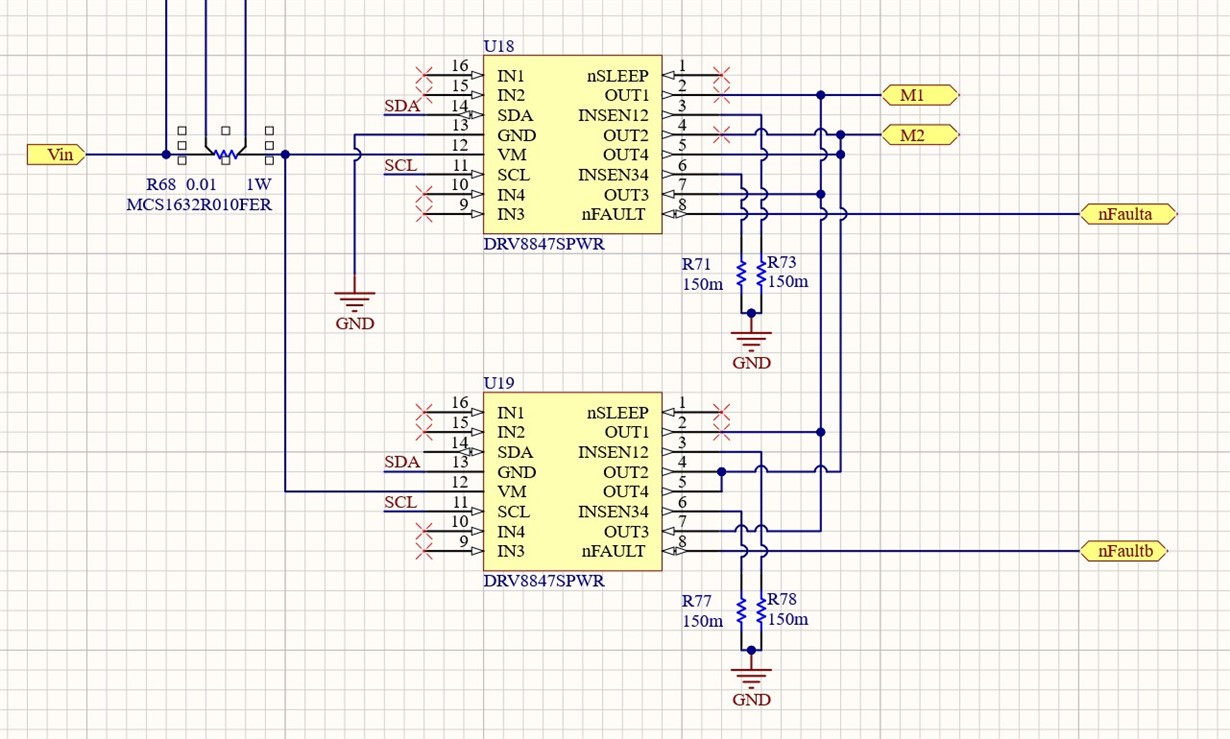Other Parts Discussed in Thread: DRV8412
Hello,
I was working on a new design. The I2C variant of the DRV8847 looked like it might work well.
Based on the datasheet (figure 15) it appears that I should be able to. I would have 4 MOSFET parallel for each section of the H-bridge.
Is it possible to place two of these motor drivers in parallel to drive a larger current?
Attached is a schematic of the circuit I am considering implementing


